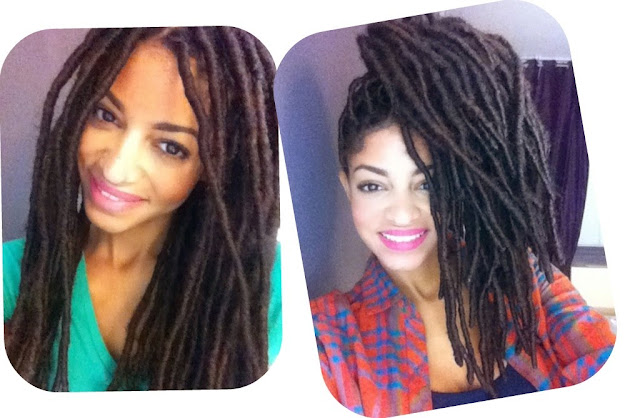Were you a transitioner or a Big Chopper? What was your journey like?
I began my journey in May of 2010. I started wearing protective styles such as braids and twists to allow my hair to transition. After 8 months of wearing these protective styles, I decided to big chop. Then, for my prom at the end of June, I cut my hair again, this time into a fade. Beginning my journey was difficult especially between the time of my big chop and getting it cut by a barber. I had no knowledge of how to manage my hair so I wore it very plainly, often dry and pulled back with a headband. It was not a good look. Having a barber cut my hair into a style allowed me to gain more confidence in my hair texture, propelling my desire to find new ways to style my hair.
READ MORE>>
Had you always embraced your texture?
At first, I didn’t know what to do with my hair. It’s not that I hated it; it’s just that I couldn’t see its full potential. I loved the feeling of not having to go to the hair salon every 2 weeks, but it was definitely challenging to keep my hair soft and moisturized. However, once I discovered Eco Styler gel and saw my curls POP for the first time, I really embraced it.
How did family and friends react to your decision to go natural? What was your response to them?
My family was NOT supportive. My Mom especially did not approve and constantly made negative remarks (which is ironic now because she is natural). Me being hard headed already defiantly ignored the remarks with an “I’m going to do what I want” attitude.
Describe your hair (fine or coarse, thin or thick, highly porous, low, etc.)
My hair is very thick with high porosity. I don’t really follow hair typing, but I’ll guesstimate that I’m a type 4. My crown is looser with S-shaped curls. The sides closest to my ears are the kinkiest with very tight coils. My nape has loose coils. Having 3 hair textures on my head makes styling very interesting every time because I’ll experience various levels of moisture retention and frizz.
What’s the craziest thing you’ve ever done to your hair?
I dyed my crown with blonde highlights. This was the first time I had ever colored my hair.
What’s your biggest hair related regret?
I don’t think I have any regrets with my hair. Everything I did, I learned from. If I had product mishaps or bad hair days, it only made me improve my technique.
What's your current hair routine? How often do you wash, condition, and style? Favorite products! Deets!
On washday, I section my hair into 4 parts and spray each section with water making sure to saturate my hair. Using castor oil (which works better than conditioner for me), I finger detangle each section and twist them up. I place a plastic cap over my head and let it sit for 15-30 min. I dilute sulfate-free shampoo with water in an applicator bottle and apply it directly to my scalp in each section, massaging with my fingertips. I haven’t even hopped into the shower yet! It helps me save water. After massaging my scalp thoroughly, I rinse my hair in sections. Next, I apply deep conditioner and further finger-detangle each section. Once I rinse out the conditioner I have two options: 1. Hop out of the shower, dry my hair with a tee shirt, and apply my leave in to prep for a twist out. OR 2. Stay in the shower to do the LOC method for my wash and go. My hair must be soaking wet to achieve a wash and go.
What’s your favorite hairstyle? Where do you get hairstyle inspiration?
My go to is the twist out or flat-twist out because it keeps my hair defined and stretched. I get style inspiration from all the lovely natural ladies of YouTube!
Who is your curl crush?
I love, love, LOVE CharyJay. When I first went natural, I couldn’t find anyone doing tutorials with my hair texture until her. She saved my self-confidence and my hair.
How do you maintain your hair at night?
I don’t wrap my hair because I’m a wild sleeper and it falls off anyway. I use a satin pillowcase.
How do you maintain healthy length?
I trim my hair often. If finger detangling is becoming difficult and I’m noticing knots, I know it’s time for a trim. Especially with colored hair, I have to trim about every 3 months.
What's the best thing about being natural?
I love the versatility of being natural, the confidence I’ve gained, and the overall health of my hair. My hair has never been this thick and full until going natural. I love my curls. My personality shines through my various hairstyles.
Where can folks find you on the web?
You can find me on Instagram at jo_withthe_fro.



























































